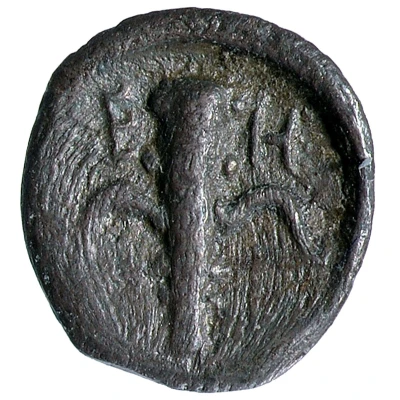


© Trustees of the British Museum
Hemiobol 432 BC - 420 BC
| Silver | 0.34 g | - |
| Issuer | Herakleia (Lucania) |
|---|---|
| Type | Standard circulation coin |
| Years | 432 BC - 420 BC |
| Value | Hemiobol (1⁄12) |
| Currency | As |
| Composition | Silver |
| Weight | 0.34 g |
| Shape | Round (irregular) |
| Technique | Hammered |
| Orientation | Variable alignment ↺ |
| Demonetized | Yes |
| Updated | 2024-10-10 |
| Numista | N#392306 |
|---|---|
| Rarity index | 100% |
Reverse
Club and strung bow crossed.
Script: Greek
Lettering: E H
Interesting fact
The Hemiobol coin from Herakleia (Lucania) was used as a form of currency in ancient Greece and has a unique design. One side of the coin features the head of the Greek goddess Hera, while the other side features a stag's head, which was a symbol of the city of Herakleia. This coin was used for everyday transactions and was valued at one-half of an Obol, which was the standard unit of currency at the time. Despite its small value, the Hemiobol coin was made of silver, which was a valuable and durable metal, and it has survived the test of time as a rare and valuable collector's item.